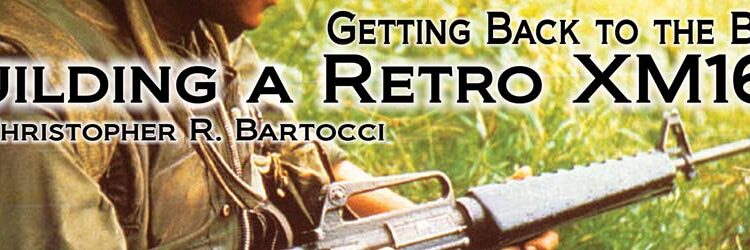By Christopher R. Bartocci
These days it seems rifles are more and more complicated than they use to be. Not even 20 years ago a real battle rifle was lightweight, iron sights and simple. As you look around the industry as well as the battlefield, we see rifles with high priced optics, expensive and cumbersome rail, flash lights, laser sights, IR pointers and fancy slings and even I Phone holders that mount to the rail. When one compares an early 1960’s XM16E1 rifle to a modern M16A4 rifle they are almost incomparable. With anything as old and as evolved as the M16 weapons platform there will always be those admirers of the original who will go through extreme measures to get them right down to the last detail. But without a doubt it is darn hard to track down 50 year old parts. Over the years there have been many sources for parts kits for these older models. All branches of the military went through product upgrade programs where they would take early model 01 rifles, M16, XM16E1, M16A1 rifles and any COTS model purchased in-between and convert them to the M16A2 rifles. They would replace the entire upper receiver, change out the stock, pistol grip and fire control group to the three shot burst group. Many of the parts found their way into gun shows and were bought up by distributors and so forth. Others were destroyed by the government. The local gun show would be a perfect place to find M16-series rifle parts as well as many of the more sought out older parts. These days it appears as though much of it has dried up and the older parts demand high premiums. In this article we will build up a proper XM16E1 and look at where the hunt for many of these parts led to.
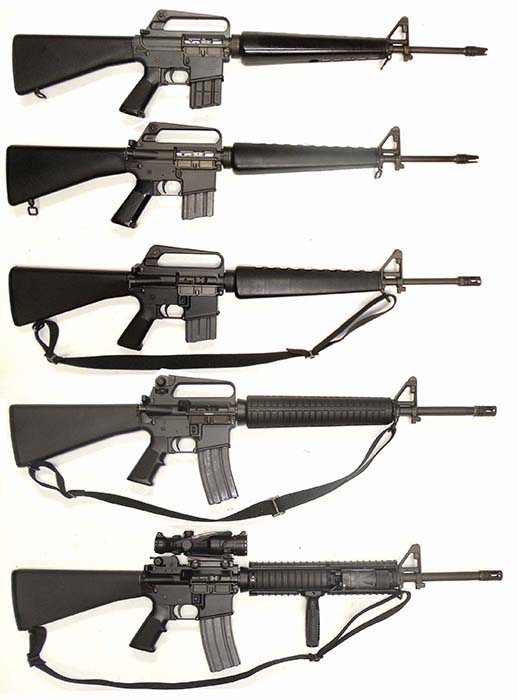
To begin with the receivers themselves, the original receivers are quite different than what is in production now. Although compatible for fit and function, the appearance is quite different to the trained eye. The original Model 01 lower receiver was very smooth on the sides. There was no captive front pivot pin nor magazine release button boss to prevent accidental magazine release. The color was more of a grey and charcoal grey finish. The original receiver had a special pivot pin with a detent in the center, which was fully removed from the rifle for disassembly. There was a special upper receiver as well with a modification for that detent to lock into the upper receiver so the pin would not fall out. The upper receiver had no forward assist. The next major change was the addition of the captive front pivot pin. A rib was added behind the pin location. This required a new forging modified to include that rib. This lower would replace the model 01 for a brief time. The next change to the upper was the Army mandated bolt closure devise or forward assist assembly. This upper would make the gun known as the XM16E1, which first entered Southeast Asia around early 1965. With the exception of the markings on the rear sight changing, the upper receiver would remain the same until 1985. The lower receiver would go through another change, due to the magazine release button accidently being released when the rifle was dropped or in a low crawl. The boss was added that put a protective fence around the mag release button. This would lead to the M16A1 rifle, which would serve until replaced by the M16A2 in 1985.
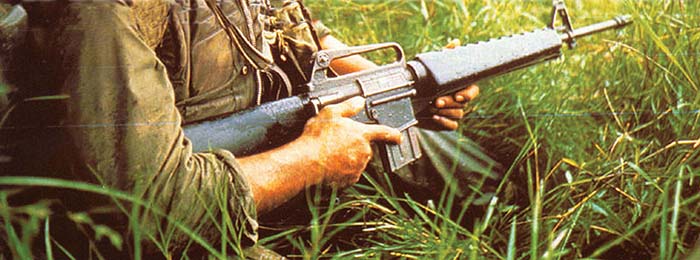
In the early years Colt was the only place to get a black rifle. Beginning in the mid 1960s a commercial model was released called the Sporter 1. This had a similar appearance to the model 601 in the fact there was no forward assist. The major difference was the larger front pivot pin hole that made the selective fire upper receivers not compatible. (Of course an aftermarket company devised an offset pin to counter that.) The AR-15 Sporter and AR-15A2 Sporter series rifles would use that same lower up until the introduction of the Sporter series that added the fence and updates of the M16A2 to the lower. In the late 1980s other manufacturers came on the scene and produced proper M16A1 style lower receivers. These would include PWA (LMT), Sendra, Olympic Arms, SGW and Bushmaster. They were made for a brief time until the release of the M16A2 and then they all made that receiver. For this Model 601 build, original Colt AR-15 upper and lower receivers were used as the base of the build. So for the retro fan, they had no source to make the early military version of the 601 receiver and the XM16E1 receivers unless they had the skills to take a perfectly good A2-style lower and machine, Dremel and file them into the older model types. The prayers of these people were met in the spring of 2007 by NoDak Spud, LLC out of Blaine Minnesota. (They later moved to Edina MN in ’08). The first 500 lower receivers were machined from 7075 T6 aluminum “A2” forgings. And most were M16A1, XM16E1 and 601 variations. The remaining 160 forgings were left as M16A2 style. The second batch was made from 6061 T6 aluminum forgings since that was used in the production models up to 1967. Talk about attention to detail and authenticity. Unfortunately, due to factors beyond NoDak Spud, LLC’s control, they could not maintain their standards for quality and appearance with the softer aluminum and went back to the 7075 T6 aluminum. All of the production is hand polished and very time consuming. So to speed things up and make production easier, in late 2007, they went to the expense of manufacturing a forging die for the M16A1-style lower receiver. This lower forging made it easier to make either A1, XM, or a 601. This was because the rear receiver ring details no longer had to be machined in. As of this writing, NoDak Spud, LLC has added forging dies for the XM16E1 and Model 601 lower receivers and a “true” M16A1 upper receiver forging die. Their “slick side” 601 style upper is an off the shelf forging available from Anchor Harvey. In 2012, NoDak Spud, LLC again resumed production of M16A2-style lowers as well.
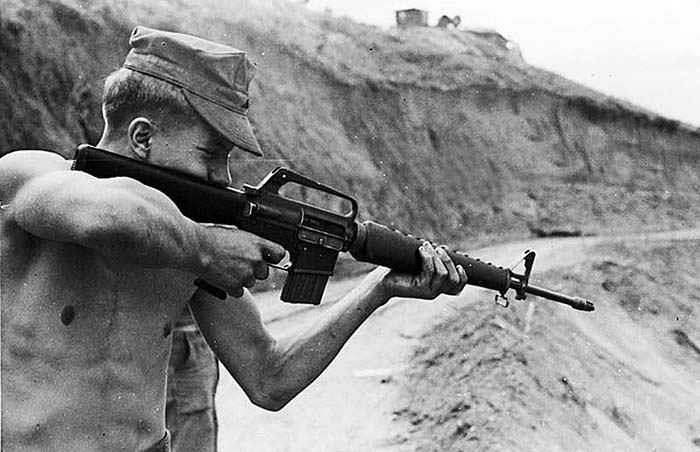
The 601 upper receiver and lower receiver use a clevis style pin with a spring loaded ball and detent crimped into the side of the pin. The NDS-31 (601) front pins are made from 4130 steel and made to the same specifications keeping with the utter authenticity of the 601. They also have produced early triangular shaped charging handles originally found on the Model 601 rifles as well as a standard charging handle. They finish the receivers and charging handles in the early Colt grey finish, which is anodized by Victor Mendros, the owner of US Anodizing.com due to he was the only anodizing company found who could match that original Colt grey used in the 1960s. The XM-grey is a type 3 hard coat with a surface hardness in the 60 range on the Rockwell “C” scale. The way that they mark the receivers allow the purchaser to have whatever “replica” markings they want engraved on the side prior to anodizing. Another highly sought after retro part is the original steel “waffle” pattern magazine. Very rare since the military had them destroyed due to their poor performance. NoDak Spud, LLC has recreated this magazine down to the last detail. The only way I knew from a distance that it was not an original magazine was that it looked too new. They sell just the body and base plate for the magazine. The M16A1 build was based off of refinished Pac West Arms (PWA) receivers, which are identical to the M16A1 standard receivers. PWA receivers were manufactured by Lewis Machine and Tool back in the late 1980s.
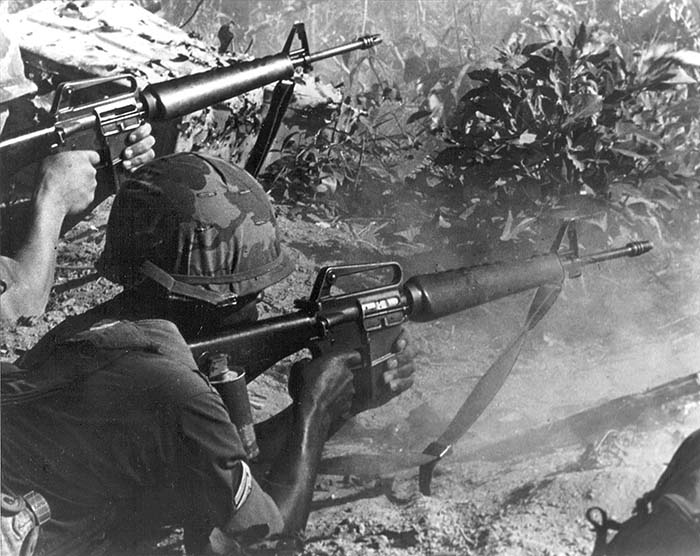
Most rifles can be made from parts kits available through several sources including Guns America, Gunthings, Apex, and Sportsman Guide to name a few. These are great for those who want to build a M16A1 or M16 clone. For those who are more detail oriented and want early obsolete parts such as the Edgewater recoil spring guide, early bolt catch, three prong flash suppressor, early ejection port covers, selector with the dimple in each side as well as the takedown and front pivot pin with the detents on the sides, that is another story. The parts used on this build came from several collectors I have known throughout the years. One of the Edgewater spring guides, dimpled front pivot pin and rear takedown pins and dimpled selector were purchased from Specialized Armament Warehouse several years ago. The other stock was found with a private collector. The original stocks without the trap door are also a hot commodity when found. Many are severely damaged and look terrible. One of the early stock assemblies was found on an online auction and the other with a private collector. The M16A1 build has a standard stock with a trapdoor that was purchased online. The pistol grips on the early rifles were made of fiberite and look different from the later A1 grips. Green model 01 furniture is even rarer. Many of these parts are lucky finds at gun shows or on online auctions. Finding components in the grey finish instead of the current black finish is quite challenging as well. I was able to locate the grey trigger guard from Essential Arms Company. They will color any needed part in the early grey finish upon request.
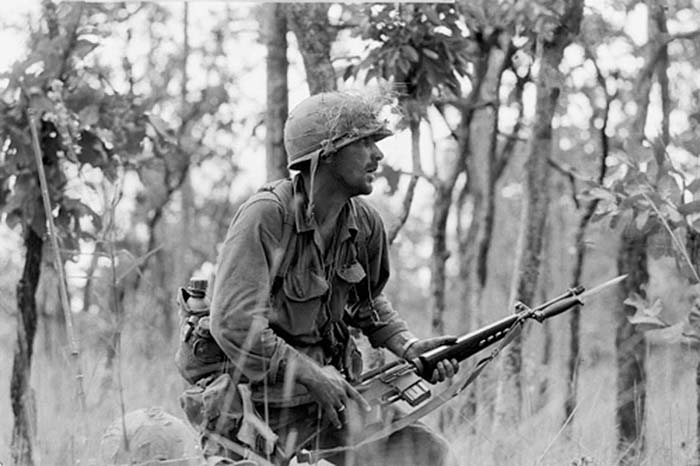
The early Model 01 and XM16E1 rifles use chrome plated bolt and carriers. The XM16E1 carrier differed in that it had the forward assist notches engaged by the pawl on the forward assist. The original chrome carriers are difficult to come by. These are also lucky gun show finds as well as found on online auctions. There are a couple companies that manufacture similar new production components such as Smith Enterprises and DPMS. These companies make the chrome carrier key and cam pins as well. The old style large head firing pin is also a very hard to come by part. Most will be found at gun shows and online sales as well. The machined firing pin retainer pin is another hard to find item. They were originally made chrome plated and later switched to black oxide. Due to cost, this part was changed over to the cotter-type pin seen today. The M16A1 build used a standard Colt black carrier group. Short of the extractor spring and some heat treating modifications, the bolt carrier group has changed little from the 1970s. The Model 01 and XM16E1 rifles were equipped with the original heavy firing pin which was later lightened to stop slam fire conditions and the M16A1 build had a standard weight firing pin installed. It is important not to fire the rifles with the old firing pins due to the slam fire issue. The military had them destroyed. These firing pins are good for the history and looks but not for function.
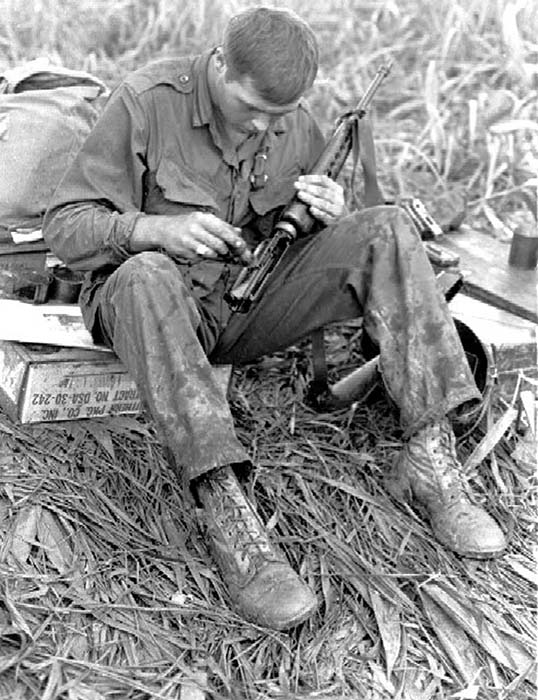
The barrels are a science in their own and well beyond the scope of this article. Original barrels on the Model 01 had a 1/14 inch twist but the Army changed that over to 1/12 by the time they started procuring the rifle. The original barrels were marked with a 12 on the bottom end of the barrel. These were not chrome plated. They had the three prong flash suppressor. The early Model 01 rifles had the “duck bill” flash suppressor. The M16 and early XM16E1 rifles were often found with the “12” marked barrel. After the issues surfaced with failures to eject, the barrels were replaced with barrels that had a chrome plated chamber. Those were marked CMPC; later the entire barrel was chrome plated inside and those were marked CMPB. Later (1970s) barrels were marked CMP Chrome Bore. Depending on what model rifle you wish to recreate will say what model barrel you are looking for. If you are looking to build a shooter you can purchase A1-profile rifle barrels from Green Mountain. When you purchase A1 parts kits, you could theoretically get any one of these barrels but there is a strong chance you will get a CMP Chrome Bore marked barrel. There are different front sight bases as well. The early ones were cast and later M16A1 would be forged as they remain to this very day. The cast ones are easy to spot due to their extremely smooth feel. The barrel placed on the XM16E1 build for this article has Air Force lineage I am given to understand. It is a “12” marked barrel with a cast front sight base and three prong flash suppressor. To properly date it, the sling swivel is pinned in place rather than riveted. The triangular handguards came with the barrel and were in perfect shape. The original steel gas tube was with it opposed to the newer produced stainless steel gas tubes. The Model 01 and XM16E1 builds used the “12” marked early barrels with the three prong suppressor. The M16A1 build utilized a “C MP B” marked barrel which is the early fully chrome lined bore and chamber. The Model 01 and the XM16E1 builds also utilized the early gas tubes and the M16A1 build had the standards stainless steel gas tube installed.
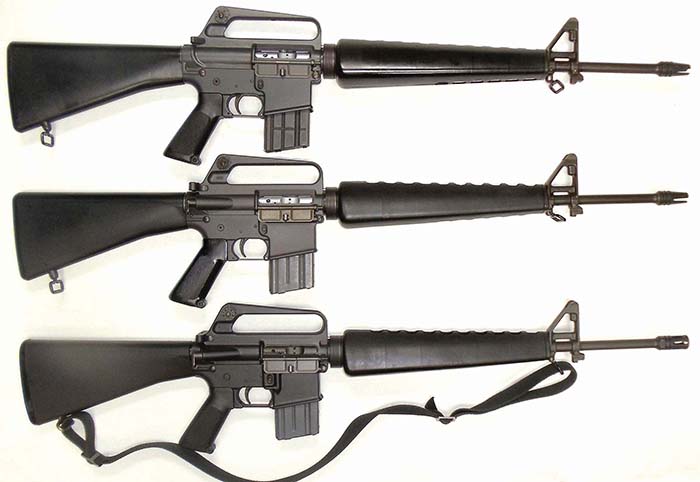
There are several web pages dedicated to retro rebuilds on the Internet. The details of each model are well beyond the scope of this article. However, this information will give you a place to start on your retro build with finding the appropriate receiver styles and some of the major part variations. This weapon system has been with the U.S. military for more than 50 years now and it is still going strong. Like cars, you have the great classics. Like those cars have hard parts to find, the same with building a rifle from 50 year old parts. The hunt will be on.

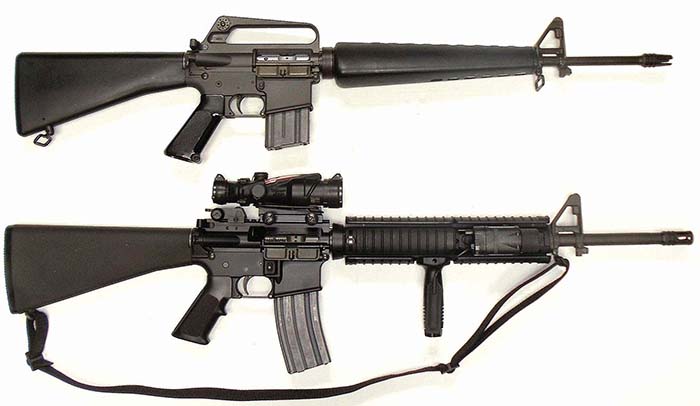
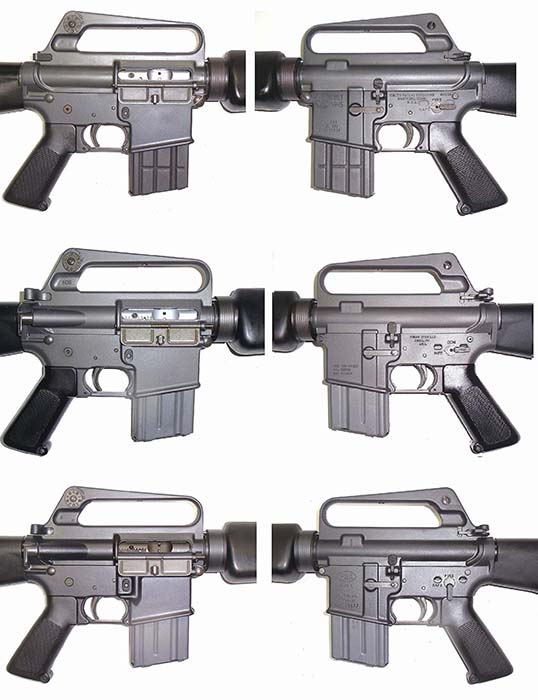
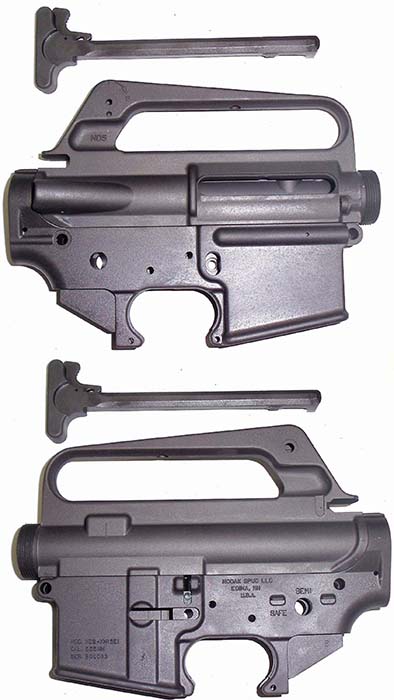
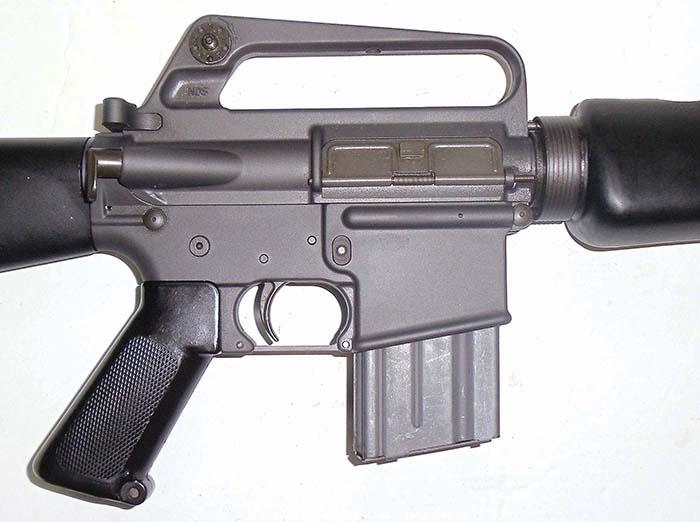
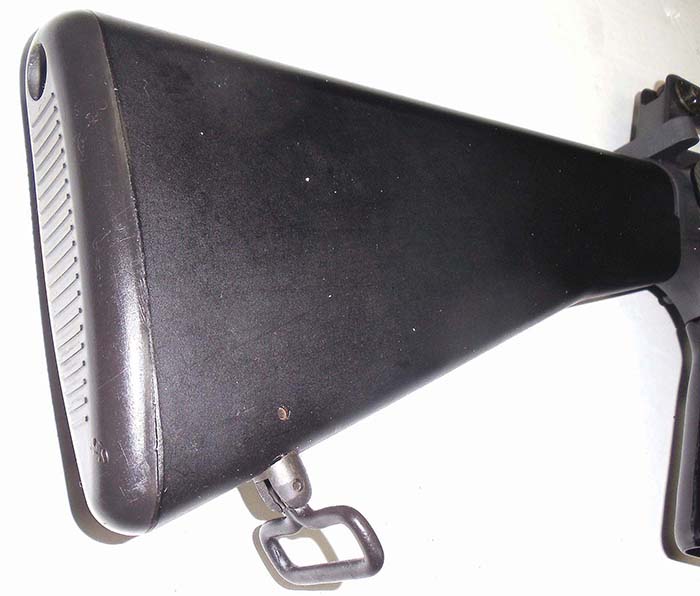
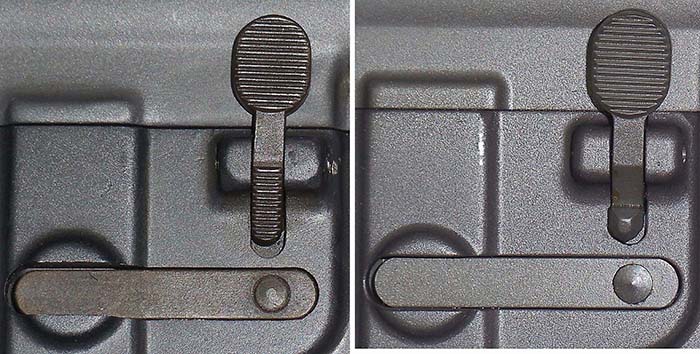
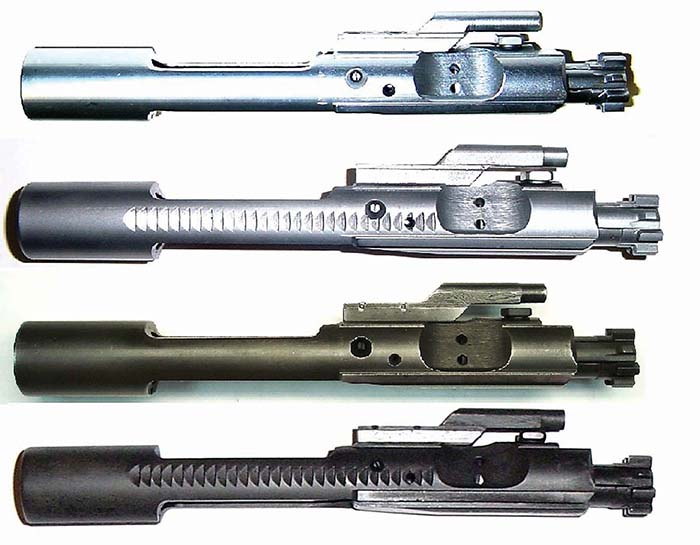
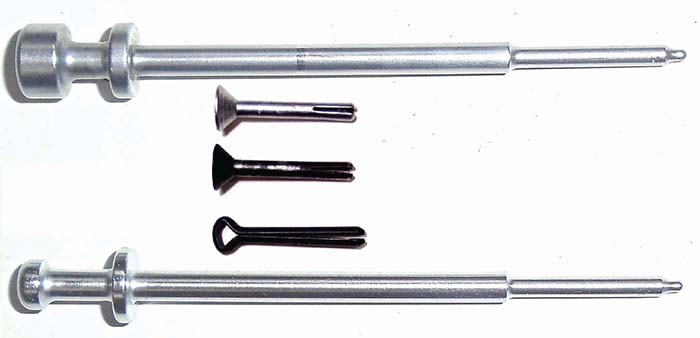

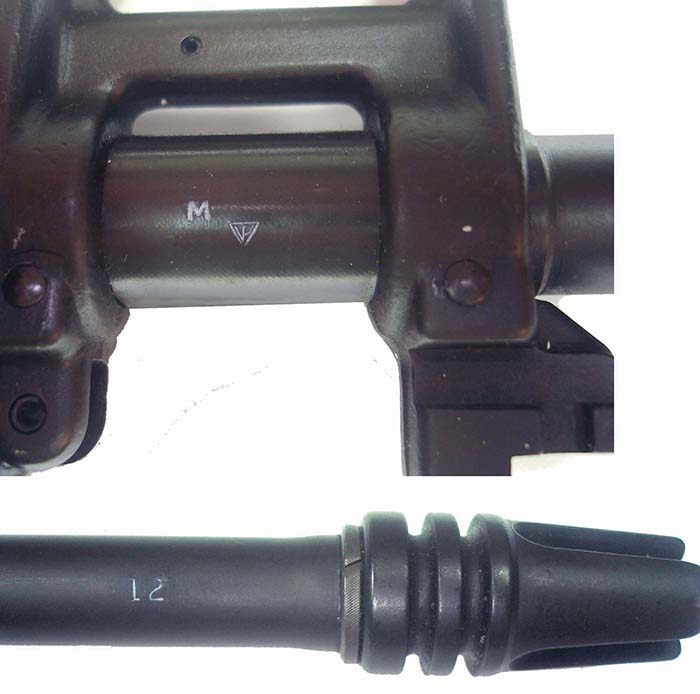
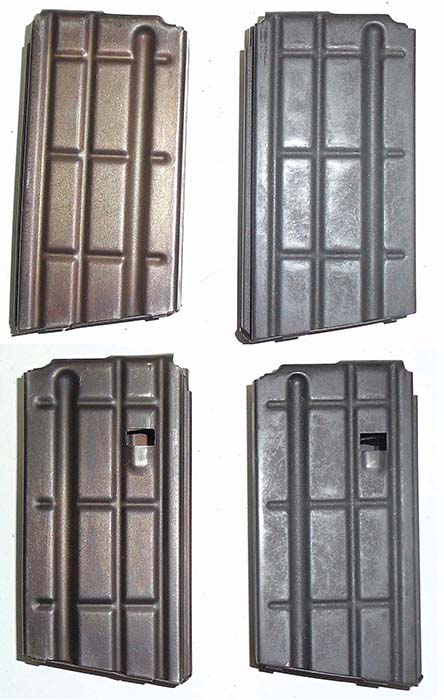
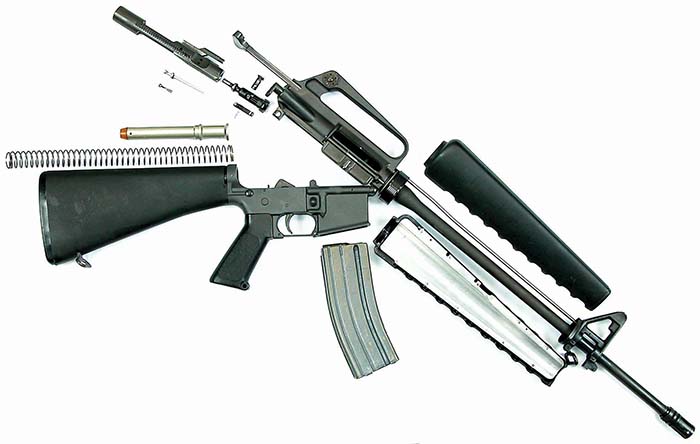
| This article first appeared in Small Arms Review V17N2 (June 2013) |



